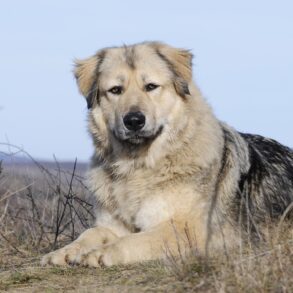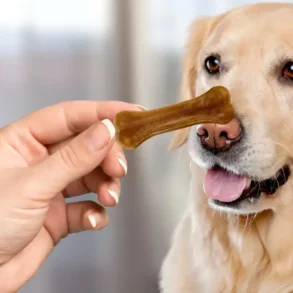Take care of your pet’s skin this summer. Apart from other heat illnesses, the season can wreak havoc with their coat health.
Summer can be a highly uncomfortable season for your furry friends as it can put them at risk of heat stress and heatstroke. Apart from other heat illnesses, the season can wreak havoc with their coat health. Dogs may experience shedding during heatwave which could lead to a thinner coat. This can make their skin more vulnerable to sunburn. High temperatures can also cause skin conditions in dogs and they may develop mats or tangles in their fur which can trap heat and moisture and may cause skin infections. Regular grooming is essential in the season to prevent such issues. (Also read | Red alert: Delhiites let their dogs out… Pupper pool parties are hot selling!)

Experts however caution against going for a complete shave for your dog as this may interfere with your pet’s ability to stay cool. During summer, the undercoat prevents your animal companion from becoming too hot by keeping cooler air next to the skin.
Skincare tips for pets
Here’s a complete expert guide on skincare for your pet during summer season:
“Just like our own skin, which not only shields us from the elements but also reflects our emotions and health, animals rely on their skin for a plethora of functions. It’s their first line of defence against predators, a means to attract a mate and a way to blend into their surroundings like a secret agent on a mission. Hair growth cycles begin in foetal life and vary after birth based on genetics, age, breed, sex, body region, hormones, stress, nutrition, and environmental factors such as day length, grooming, and climate,” says Dr Umesh Kallahali, Small Animal Consultant, Mars Petcare India.
Summer can significantly impact dog’s coat. Beyond heat stress and heat stroke, several key factors influence coat health. Waltham studies show that adding patented zinc and linoleic acid, an omega fatty acid, to a balanced diet leads to significant improvements in skin and coat condition.
Dr Kallahali shares skincare tips for dogs during summer:
Living conditions: Dogs living indoors, especially long-haired breeds, often start shedding sooner because they are exposed to many hours of artificial light, causing them to moult continuously throughout the year. Photoperiod, or the amount of light exposure, is more influential on shedding than temperature. Indoor lighting disrupts natural shedding cycles, leading to more frequent moulting. In summary, indoor living conditions and exposure to artificial light significantly affect a dog’s shedding patterns.
Skin and coat health: This hot environment can be impacted by various factors, including UV light exposure, compromised immune function due to heat stress, and the presence of parasites and secondary infections. While it’s common for pet owners to shave or trim their dogs in an attempt to cool them down, this can actually have the opposite effect. The fur serves as natural insulation, creating a barrier of cool air within the coat. Grooming is beneficial for some pets, but completely shaving the coat should be avoided as it may hinder the regrowth of guard hairs in certain breeds. Areas like the nose and ears, especially in white or pale-colored animals, thin-haired, or recently clipped dogs, are susceptible to sunburn, so it’s advisable to consult your vet about applying sunscreen to these areas.
Brush, Brush, Brush: Daily brushing is essential for maintaining your dog’s coat health by effectively removing loose hair and preventing the formation of mats and tangles. Brushing helps distribute natural oils throughout the coat, promoting shine and overall health. It also stimulates blood flow to the skin, which can improve skin conditions and reduce shedding. If daily brushing is not feasible due to time constraints or your dog’s coat type, aim for at least two thorough brushings per week to keep the coat in optimal condition. Regular grooming not only enhances your dog’s appearance but also strengthens the bond between you and your furry friend while ensuring their comfort and well-being.
Give a bath: Regular baths with moisturizing shampoo play a crucial role in maintaining a healthy coat and preventing dry skin in your furry friend. The moisturizing properties of the shampoo help to nourish the skin and coat, keeping it hydrated and supple. A well-moisturized coat is less prone to excessive shedding and appears shinier and more lustrous. Aim to bathe your dog every few weeks to ensure optimal coat health, but adjust the frequency as needed, especially if your dog gets particularly dirty or encounters environmental factors that may soil its coat more frequently.
Feed him complete pet food: Make sure your dog’s diet includes a variety of nutrients crucial for maintaining a lustrous coat and minimizing shedding. Fatty acids, such as omega-3 and omega-6, play a vital role in skin health and coat condition, while minerals like zinc are essential for maintaining the integrity of the skin barrier. High-quality proteins provide the building blocks for healthy hair growth and repair. Opt for packed pet foods that are specifically formulated to promote skin and coat health, as they often contain optimal levels of these nutrients.
Control parasites and keep up with vaccinations: Use modern, safe, and effective monthly tablets to control parasites, alongside spot-on treatments, sprays, and shampoos. Regular parasite control not only keeps your dog healthy but also contributes to a better-looking coat. Ensure your pets receive their annual vaccinations and regular worm treatments during the summer, and seek advice from your vet regarding suitable treatments.
Catch your daily dose of Fashion, Taylor Swift, Health, Festivals, Travel, Relationship, Recipe and all the other Latest Lifestyle News on Hindustan Times Website and APPs.
This post was originally published on this site be sure to check out more of their content.







































